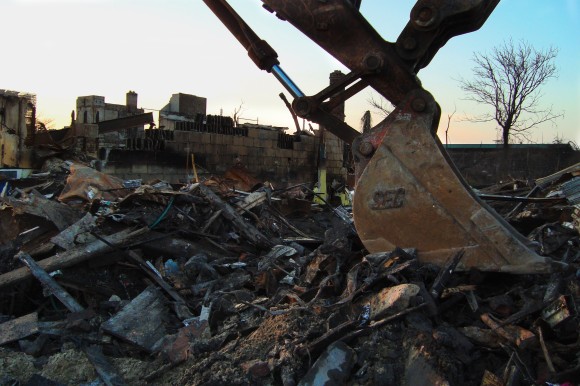For insurance companies, now is a good time to buy reinsurance. Prices are down and terms and conditions are favorable, according to Mathew Wulf, vice president, state relations and assistant general counsel, for the Reinsurance Association of America.
All in all, it’s a buyer’s market, Wulf said during a presentation sponsored by the Texas Surplus Lines Association at the Independent Insurance Agents of Texas Joe Vincent Seminar in Austin in January.
For instance, “typically you would have yearly renewals. Reinsurers are now looking at multi-year deals and are willing to give you a price quote on a two- or three- year catastrophe cover. Some of the more restrictive contract terms are disappearing. You’re just in a better negotiating position as an insurer right now in the reinsurance market.”
Wulf’s remarks were in line with the message from Willis Re, the reinsurance division of Willis Group Holdings plc, in its “1st View Renewals Report,” published in January. Prices were down as much as 25 percent for Jan. 1, 2014, reinsurance renewals in the United States, according to the report.
A combination of factors is contributing to the trend toward lower rates and less restrictive terms and conditions. Among them: excess capacity and relatively few natural and man-made catastrophes, the Wills Re report stated. In fact, the report said, “2013 natural catastrophes were half of what was experienced in 2012.”
“It really is a game change for reinsurers” the RAA’s Wulf said. “It’s a whole different environment that we’re coming into now than we’ve been in for the past 20 years.”
While the number catastrophes and associated loss amounts were down somewhat in 2013, the previous few years saw some tremendous losses – even without huge hurricanes, Wulf said. 2010 and 2011 were record years, he said. In 2010 alone there were 247 natural catastrophes in the United States that caused a cumulative $13.6 billion in damages. Then in 2012 Superstorm Sandy resulted in $20 billion to $25 billion in insured losses, Wulf said.
But even with those these events there still was “no real hit to capital, no hit to surplus,” he said.
The fact is, Wulf said, the United States is where everyone wants to write risk.
“We’ve got a lot of uncorrelated risk, which is important here in the U.S.,” he said. “You can write Florida hurricanes and Gulf hurricanes, and hail and earthquakes, California earthquakes. And chances are none of that is going to happen all at one time. So reinsurers are very interested in the U.S. market.”
As an example of how the market has changed, Wulf pointed to the Texas Windstorm Insurance Association, which went bare on reinsurance for a couple of years.
TWIA, the wind and hail insurer of last resort for properties along the Texas coast, is now “purchasing reinsurance again,” he said. “It’s a good deal now. The amount they’ve spent on purchasing reinsurance has remained the same over the past couple of years but the amount they’ve been able to get has actually increased in each of the past two years.”
The Non-Traditionalists
Pressure on the reinsurance market is also coming from non-traditional players that are seeking a return on equity: hedge funds and pension funds, Wulf said.
“A $7 trillion pension fund industry is now interested in catastrophe risk, reinsurance,” he said. “If they allocate 1 percent to it, it makes a big difference and it’s nothing to them, it’s a fluctuation in the marketplace. It’s uncorrelated risk, so they’re very interested in doing catastrophe bonds and insurance linked securities.”
Pension funds have put a large amount of capital into the reinsurance market already. That amount is “expected to continue to grow to maybe another $100 billion over the next five years as they try to find a way to make some money,” Wulf said. “Pensions, like all of us, are trying to invest and finding very small returns. And if you can get 7 percent in reinsurance, that’s pretty good.”
The investment by the pension funds and hedge funds does not necessarily signal the end of traditional reinsurers, Wulf said. For one, they are mainly involved in specific types of non-traditional reinsurance. Plus, he said, “hedge funds and pension funds are not that interested in underwriting.”
Traditional reinsurers, he said, are in fact serving those hedge and pension funds by evaluating the price of risk, helping to set up some of the risk transfer vehicles, such as captives, and managing the capital the funds are bringing to the market.
An Expansion Opportunity
Reinsurance pricing is now below levels last seen in 2007, Wulf said. The ability to purchase reinsurance at these lower prices enables insurers to write more business and expand into areas that were previously restricted.
“Companies looking to get into new things can now use some of that reinsurance capacity to do that,” he said.
Of particular interest currently are emerging risks such as “cyber liability, flood, nanotechnology, climate change – any of those kind of new areas, insurers are looking to develop new products. A good way to access additional capital to get into that is through the reinsurance market,” Wulf said. “So it’s a pretty good opportunity for insurers to leverage their reinsurance, use that reinsurance to enter new markets, write new business and write more business.”
U.S. – The Place to Be
There were 5,116 reinsurers from 110 jurisdictions that assumed risk in the United States last year, according to Mathew Wulf with the Reinsurance Association of America. But, he said, the top 40 reinsurers are doing 80 percent of the business, and the bulk of those reinsurers are coming from the top 10 global jurisdictions. “The U.S. market is a huge piece of business,” Wulf said. “It’s really where everybody wants to write risk.”
Topics Catastrophe USA Texas Reinsurance Market
Was this article valuable?
Here are more articles you may enjoy.



 AIG General Insurance Chairman McElroy to Retire May 1
AIG General Insurance Chairman McElroy to Retire May 1  Progressive Gains as Drivers Shop Around for Auto Insurance—Again
Progressive Gains as Drivers Shop Around for Auto Insurance—Again  Jury Awards $80M to 3 Former Zurich NA Employees for Wrongful Termination
Jury Awards $80M to 3 Former Zurich NA Employees for Wrongful Termination  Former Congressman Charged After Collision with State Trooper in Florida
Former Congressman Charged After Collision with State Trooper in Florida 


